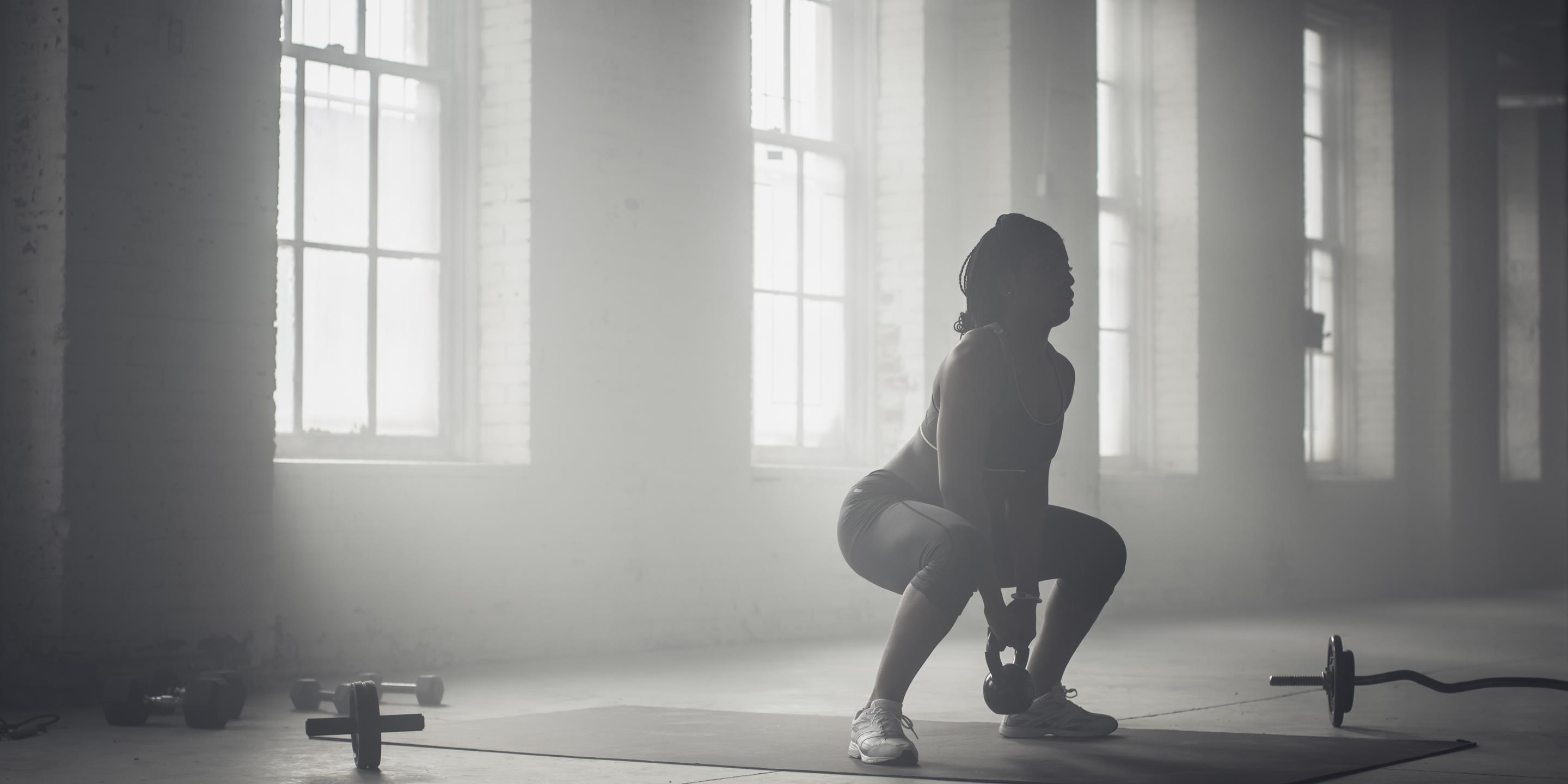It's an injury that sidelines many an athlete. Don't let it happen to you.
You may have seen the Nordic Hamstring Workout playing out in the gym or on social media. It's where a person sits on her knees, ankles pinned to the ground behind her, and she lowers her torso toward the ground as slowly as possible (the more controlled, the stronger the hamstrings). The move is popular because it's both effective and looks fairly cool. It also reflects the concern surrounding the prevalence of hamstrings injuries.
Hamstrings—those muscles that run down the back of your thigh—are the most common injury in elite non-contact sports, according to the American College of Sports Medicine, and are front-of-mind for professional athletes and weekend warriors alike.
"Most sports require powerful hip extension as seen in running and jumping, which the hamstrings will contribute to," explains Matt Delaney, CSCS, a New York City-based Tier 4 coach. "The hamstrings resting length can greatly effect their ability to contract with maximum force by altering the length tension relationship. A muscle that is chronically shortened from overtraining, or held in a lengthened position because of a postural distortion, will not function optimally and is far more susceptible to injury."
The source of a hamstring injury can be weakness; movement pattern dysfunction and mobility/stability issues; or a combination of the two.
In an effort to prevent these issues from arising, trainers like Delaney are more proactive in their efforts to improve athletes’ flexibility, mobility and strength in their hamstrings (and down the entire kinetic chain, really). First they perform a series of assessments, such as a functional movement screen that gauges how well your muscles all work together, a static posture test that spots issues like anterior pelvic tilt (at rest, your rib cage should sit on top of your pelvis like a box on top of a bowl) and isolated strength exercises that can highlight specific weaknesses in your hamstrings and glutes. Once they’ve identified the underlying issues, they can assign a set of strength and agility moves to address the problems.
“Some of these techniques require assistance from a professional, while others can be done on your own,” notes Delaney. Use the following exercises to try and assess—and address—any of your own personal hamstring weaknesses.
(1) ASSESS
Active Straight Leg Raise:Lie face-up with legs and feet together, arms extended about 45 degrees from sides.Slowly lift one leg straight up toward ceiling, making sure bottom leg doesn't move. If you can raise it close to 90 degrees without moving the other leg or compensating in any other way, then you can assume that you have adequate mobility to perform most hinging motions. However, if you’re not close to 90 degrees, or there is a significant difference (asymmetry) between your left and right legs, then you need to work on improving your flexed hip mobility and core stability.
Deep Squat:Stand with feet at least hip-width apart, and squat, bending knees and pushing hips back, as low as you can, keeping back tall. Once at the bottom, push through heels (activating the posterior chain) and return to start. Your goal is to be able to drop down well below parallel with a tall spine, knees tracking over toes and heels remaining in contact with the ground at all times. If you can’t make it down that low (or maintain proper form in the process), then you need to work on building mobility and strength in your posterior chain, ankles and hips.
(2) ADDRESS
Stability Ball Hamstring Curl
Benefits: Itrequires three types of muscle contractions (isometric, concentric and eccentric) at different points in the movement, which can help to address weakness through the hamstrings’ full working range.
Perform: Lie face-up on floor with legs extended and together, heels on top of a stability ball and arms out by sides at shoulder level. Slowly lift hips off floor, forming a diagonal from shoulders to ankles, and bend knees, pulling ball toward you. Slowly reverse motion, lowering back to start. Do 15 reps. (You can also curl one leg at a time.)
Deadlift
Benefits: The hip hinge is a a fundamental human movement that requires forceful extension of the hip, which makes it a great choice for strengthening the hamstrings.
Perform: Stand with feet hip-width apart, holding a barbell in both hands. Hinge at the hips, keeping the back flat and shoulders pulled back. Raise the bar along front of legs, fully engaging the posterior chain. Reverse motion back to start. Do 15 reps.
Kettlebell Swing
Benefits:The kettlebell swing is a more advanced movement that's great for developing powerful hip extension, which the hamstrings contribute to.
Perform: Stand with feet slightly wider than shoulder-width apart, kettlebell between legs and a little in front. Reach down and deadlift the kettlebell, then let it hang softly in front of you, maintaining soft knees, a strong core and keeping shoulders back and tall. Keeping knees bent, hinge forward slightly from hips, lowering kettlebell between legs and behind you. Driving from your hips, simultaneously extend legs and swing kettlebell straight in up to shoulder level in front of you. Use momentum to lower back into hinge position; repeat immediately. Do 15 reps.
An important note: Previous injury can be an excellent predictor of future injury. “A pulled/strained hamstring is often nagging and slow to heal, because it is hard to completely rest," Delaney said. Then, if you're feeling better before you're completely healed, you may be tempted to do more than you're capable of at the moment. To wit: Nearly a third of hamstring injuries recur within a year of returning to the sport, and the new injury is more severe, finds researchers at the University of Wisconsin at Madison. “If you pull/strain a muscle, the best thing you can do is to stop what you are doing and seek assistance from a qualified professional to determine the severity of the strain and the best course of treatment.”
